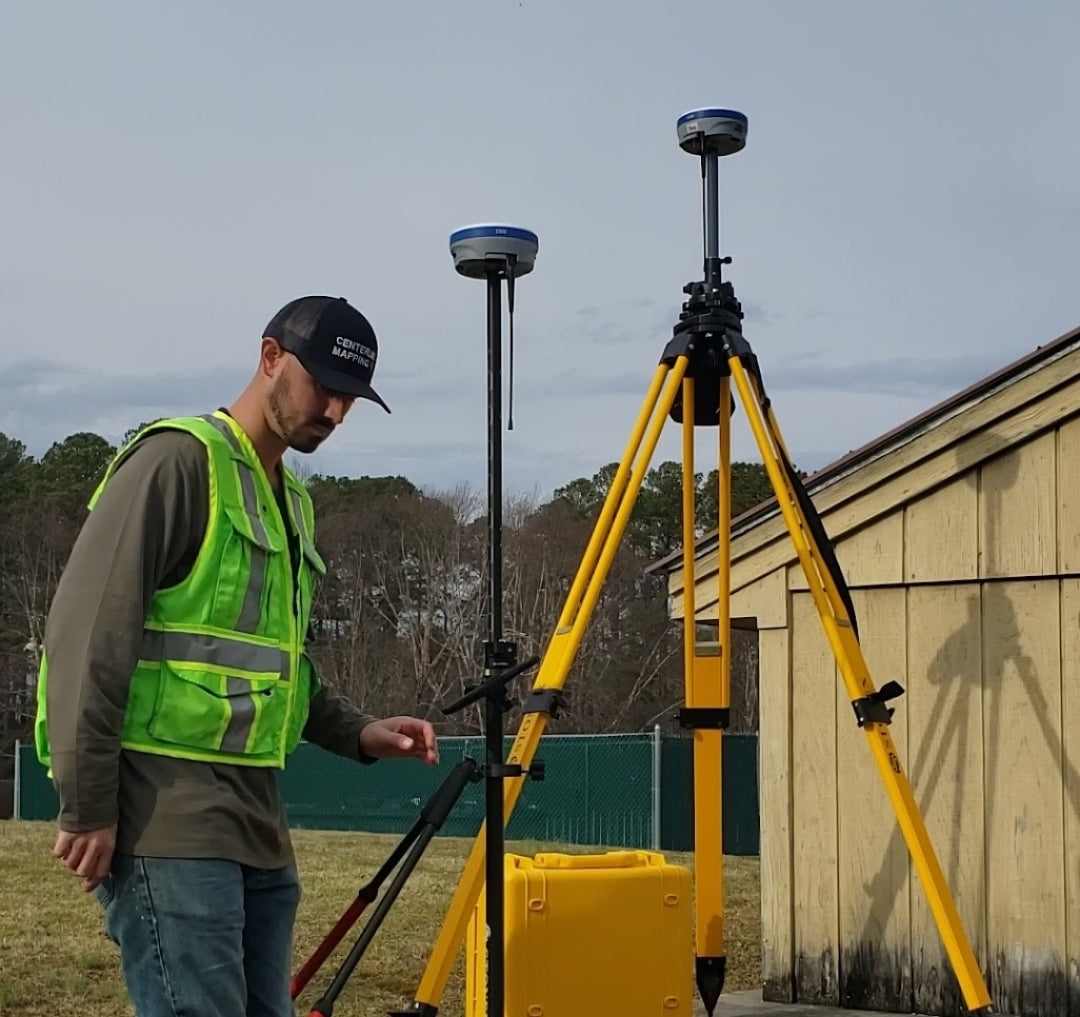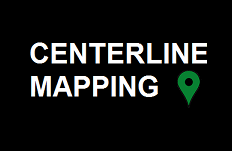
Time is Money! Reliability is Money! (and so is Data Quality!)
Share
What GNSS receiver is best for you?
Well, what type of work do you do?
Map utilities for residential map reference?
Machine control for site development?
Construction stakeout and elevation control?
Boundary retracement surveys?
Utility as-builts?
Design engineering?
Topographic Mapping?
Utility locating and subsurface utility engineering?
Everyone wants the best GNSS receiver, for the least amount of money! If it can get "centimeter accuracy" like the salesman tells me, then I want it! And it's only $2,000? Yipee!
But it doesn't work that way people. It might get centimeter accuracy after you stand at a point for 2 minutes, if it is out in the open away from everything, and all the stars align, and you are within 10 miles of the base on your network, and cell signal is good, and you ate 2 bowls of Wheaties for breakfast.. I guarantee it won't get cm accuracy in the woods, or under a tiny tree, or beside a building. You will never want to use that receiver because it takes so much time. You are telling clients cm accuracy, and 50% of your points are 1ft or more because the receiver doesn't get the accuracy at those points. I have seen this happen over and over again.
I've spoken with people who have spent 4 hours doing a mapping job that should have taken them 30 minutes. 4 flipping hours! Because the GPS will not get fixed and give them good positioning, unless they stand and wait, at each point they collect. SMH! They are charging a flat fixed fee, and the GPS is costing them their entire profit margin on the job. Another SMH!
I have seen people just stop using their GPS because it sucked and they couldn't turn a profit using it, because they bought a cheap one and it wastes their time and takes forever to get the results the salesman said it would get them.
I've also spoken with other people who have dropped their $2,000 receiver and it cracked like an egg. Now you have to send it back, get it fixed, and be without your GPS for weeks and weeks, anytime you drop it.
I've spoken with people who need GPS to work in the woods, and they were using their old GPS, standing on property corners for hours, hoping to get a fix, so they could avoid cutting line and using a total station. With 4 corners, and 2 hours per corner, that would take you 8 hours. Why not buy a GPS that works in the woods and do that work in 1 hour?
We brought our solution out, and we showed them just how fast it gets fixed positions under 60ft tall trees, in the middle of the woods, and they were sold, immediately, end of story, well actually the story continues...
I'm not here to brag, I'm not here to knock other manufacturers, or products. But I am here to help you learn and understand what options you have, and what spending a little extra money on GPS will do for your bottom line. Based on my research, spending more money on a GNSS receiver saves you TIME & MONEY in the short and long run!
Also, more money offers additional features that will save your butt on all of your jobs, not just some, every time you use the receiver, it will save you time and improve the final deliverable, giving you peace of mind and profit!
I guarantee you will never want to use your old GPS ever again. I am telling you right now. I'll even offer to buy your old GPS if you purchase a new one from us.
Here are some features that you need with your new GPS.
UHF = Ultra High Frequency (UHF). UHF is used for base and rover GNSS receiver setups. You set a base up, and that gives you corrections in real-time, very helpful when correction services via phone network are not available, or you just need a shorter baseline for your work. This goes back to my point about not putting a base on your roof, and bringing it with you. The closer you are to your base, the better your rover will operate. Just bring your base with you and you will get the best performance. You need UHF on your receivers in order to get them to communicate with each other. This can also save you thousands of dollars per year on purchasing an RTK subscription. In VA, they cost $2,400. You can save $2,400/year with a base, and get better results with it being set up on your job.
IMU = Inertial Measurement Unit (IMU). IMU allows users the ability to tilt the receiver and pole, to collect difficult points such as building edges, corners, inverts, manhole lids underneath cars, and even points along a utility. Our customers love this feature as it saves them the headache of always worrying about being plumb. This is also a great feature for using your GPS with GPR on slopes. If you start using tilt, you will never want to not use tilt ever again.
GNSS receivers tend to lose signal and accuracy next to tall structures (fence, building, overhead structures). The obstruction of those features blocks satellites and limits how many satellites the receiver can use to calculate its position.
This is why you want a receiver that can communicate with more satellite constellations, on multiple frequencies, on more channels, giving your receiver a greater opportunity to achieve fixed positions even when objects are blocking a large percentage of the sky.
IMU helps because it allows you to tilt the receiver away from objects, achieving greater sky visibility, while you keep the rod tip at the point you need to calculate and collect, not the position directly below the receiver. If you don't have tilt, you will not be able to tilt the receiver away from the building and you will get a poor signal and accuracy on those shots. And if you don't have IMU, and you tilt your receiver, you will collect the point directly under the receiver, which could be 4-10 feet off.
With IMU, you can place the rod tip at the point you need to collect (bottom of a building corner), then tilt the receiver away from the feature (light pole, building, fence) and calculate the position of the rod tip using the IMU function capability, in real-time! There's no waiting around for this. It happens almost as fast as lightning.
By tilting the receiver away from the structure and where it can see more satellites, it keeps its signal, fixed position, and can calculate the position of the rod tip, not the point directly below the receiver. Your measured position could be off by +10ft from the true position if you didn't have IMU. I said that twice because it will save your butt.
When you collect data directly against a building, without IMU, you will have to hold the GNSS receiver against the building. This will block the receivers views from satellites, meaning your accuracy will drop tremendously. Why not buy a receiver that solves this problem?
This is all possible because these receivers have incredible GNSS boards with hundreds and hundreds of channels where the receiver can communicate with 25+ satellites at once, on multiple different frequencies. This is how we get the speed, because these receivers are calculating numbers nonstop, behind the scenes, triangulating with multiple satellites and correcting its position with your local base. All you need to see is FIXED, and you will, if you use these receivers.
So remember, if you are considering purchasing GNSS receivers, think about time, performance, and quality data.
You don't want to submit junk data do you?
You also don't want to waste valuable time collecting data if you can collect it all in 20% of the time with a higher performing receiver, now do you?
Your reputation and income is on the line. You may save a couple thousand dollars on your initial purchase buying a dinky RTK GPS, but it will cost you time every time you use it, and it will cost you quality in the final deliverable.
I would highly recommend investing the money to save yourself time, sanity, and embarrassment.
If you are telling clients survey-grade centimeter-level accuracy and 20-40% of your points are 3-10ft, that's not good.
If you can't tilt your receiver or maintain fixed positions in tough locations, due to a lack of signal, that's no good.
One of the most important factors to consider is time...
Surveyors are increasing their performance by 400% using GPS receivers by Centerline Mapping. They are completing jobs in 1 single day that would have taken them 5 days. That's a 400% increase in performance, not to mention bottom dollar.
If you have any questions whatsoever about GNSS receivers, comparing products, or need to make a purchase and start mapping with confidence, give us a call.
We are happy and here to support you, and we have videos that show these receivers, live, in action, in the field, in the woods, comparing results with total stations, and being tilted 60 degrees and still getting within tolerance you need!
Reach out for a quick discussion on how we can help you.
To your success,
Tyler Bristow
757.647.7016
